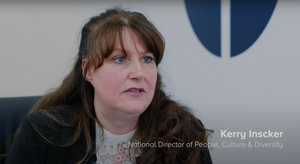Rarely do things go together as well as Jamf and Explain Everything Whiteboard. The Royal Grammar School Worcester Family of Schools have been using both solutions in tandem for over six years, and they were happy to tell us all the reasons why. Over the course of an almost hour-long conversation, Heads of Computing and Digital Learning Matt and Emma went into the details on wide-scale deployment and their everyday teaching workflow – and how using our software has made their work that much easier and more fun.
Royal Grammar School Worcester Family of Schools
United Kingdom
RGS Worcester is a renowned English independent school with a rich history dating back to the 7th century. Their attitude to education, however, is anything but medieval – school leadership was on the lookout for tech solutions to support teaching years before the pandemic made that a necessity. In 2011, they began deploying iPads to the classroom, in 2014, they launched their Digital Learning Programme and only three years later in 2017 they became an Apple Distinguished School.
Explain Everything Whiteboard became a staple app at the RGS Worcester Family of Schools soon after, when a few of the more tech-savvy teachers realized just how much it can assist pupils in reflecting on their thinking. Today, the school’s over 1600 pupils benefit from a full-scale 1-to-1 iPad deployment. Both teachers and pupils use Explain Everything daily, and the entire faculty relies on the security and convenience of Jamf School on iPad to organize their lessons.
Opening up the classroom
Once he had his very own iPad equipped with Explain Everything, Matt, Head of Computing and Digital Learning at RGS The Grange Worcester, Prep School Teacher & Apple Distinguished Educator, began looking for ways to use it to transform his teaching for the better. Years later, he maintains that it was the ability to screen mirror that made all the difference. Suddenly he was no longer chained to the board at the front of the classroom – screen mirroring his Explain Everything canvas gave him the ability to walk around, observe pupils and put spontaneously taken pictures of their work up on the board for everyone to discuss. This ‘fundamental shift’, as he puts it, made him a more a part of the class. And that was just the beginning of the entire school’s shift towards constructivism. Soon, pupils were sharing their own screens on the board, too.
Says Matt, “Any pupil in the class can put their work on the board at any point in time, obviously, with permission of the teacher – the teachers have got little control devices. So you really open up the classroom and the pupils suddenly have this ability to not just be learners, but actually to be educational coaches.
So many times when I step back, pupils will take over the screen, and there will be a little group of pupils around that board. Because they want to learn how that pupil has gone about their work and, and they will often teach in a different way than adults do. And sometimes we've got to accept that we don't always have the answers.”
Emma, Head of Computing and Digital Learning at RGS Dodderhill, Droitwich, Computer Science teacher & Apple Teacher, is also quick to point out that the ability to annotate materials live is a lifesaver in remote teaching, too. To make sure pupils stay with her no matter the distance, she likes to invite them to participate in what’s happening on the canvas, too. Nothing is as motivating as feeling included!
Jamf School as a cure for deployment pain points
RGS Worcester started using Jamf School about 4 years ago, the main reason being that they wanted student iPads to be educational tools, not toys. That means no games and no messaging, at least at school! Being able to regulate what apps are available and when has been a game-changer in terms of both security and productivity. In the past, it could take weeks for a class to have all their devices learning-ready. Now, pupils’ iPads are ready to be used before they even arrive at the school. And that means both teacher and pupil energy can be channeled towards what really matters from day one! Any school tech director knows what a nightmare large-scale hardware and software deployments can be. Using Jamf reduces the normal complexity of the process to virtually zero, benefiting everyone involved.
"The Jamf ecosystem is designed to work with Apple seamlessly, and so what our deployment looks like is that parents order iPads through our reseller, they come in the box, the child takes the iPad out of the box, and then it’s ready to go into the classroom,” says Matt. “With Jamf, there are more settings, more control, more options for us as educational leaders. What we wanted was for the iPads to be just like pencil cases, a really important part of the child's toolkit for the day, and Jamf allowed us to do just that. It was a huge, huge moment when we went over to Jamf.”
Total Cost of Ownership: How the best hardware and software are cheaper in the long term
Price is an important factor for any buyer, but this is especially true of schools. It is an unfortunate truth that educational institutions often struggle to find funding for new purchases.
This is where TCO, or Total Cost of Ownership comes in. Schools like RGS Worcester and thousands of others have done the math and reached the conclusion that cutting costs initially typically results in spending more later on.
“It’s a quality over quantity issue,” Matt says.
"Our school tested everything on the market. In terms of the hardware, the iPad was chosen because it had a camera, and it was just the best tool out there. Explain Everything is simple and it works seamlessly with other apps, no adverts or pop-ups. It just makes sense, because the cost is outweighed by all the potential problems or limitations you could have with other apps. And it does what it says on the tin, it allows pupils to explain everything!”
True engagement through real-time collaboration
It can be hard to make slides engaging, and nobody knows this better than teachers. Even adults can have a hard time focusing on a presentation, much less children. Explain Everything’s presentation layout was designed specifically to allow teachers the freedom to annotate and add on to their presentations live – and the software’s collaborative functionalities mean others can join in, too. This keeps the pupils on their toes, because they know they can be called on to answer a question or share their feedback at any moment, no matter where they are. And thanks to Jamf, teachers can also rest assured student devices are being used only for the lesson, during the lesson.
“I can lock them into the app I’m using,” says Emma. “And then I can send them a link to Explain Everything, and they can join that live whiteboard. This is just transformational because they can see my annotations as I'm making them, or I can stop the lesson and say, can you annotate my lesson at the same time? Having that interaction between myself and the pupil, and making them feel included, it’s just so important. Rather than them just sitting there watching.”
Pupils being able to interact with their teachers in real time is not all, either. Perhaps even better yet, they can interact with each other, building their own knowledge along the way.
“The ability for them to kind of interact on the canvas, collaborate with each other in real time – it’s huge for them, they get so much out being able to talk in their own language to each other. It means that they can control the flow of information and they can say to each other, you know what? I don't understand that word. What do you think? And it's okay for them to get it wrong a little bit here and there, because what matters is that they are helping each other and learning together.”
The power of explainer videos on iPads
Explainer videos are so much more than material teachers can make for students to watch, though the easy creation of media-rich tutorials is undoubtedly an area where Explain Everything Whiteboard shines. Student-created videos can serve a wide range of didactic purposes, but every one of them bolsters independent thinking and intrinsic motivation.
Says Emma, “I like to ask pupils to record their responses to tasks so that I can understand their thought processes while working through problems. This way, I get to see their methodology, which is so much more important than just a correct answer. Then I can intervene and scaffold in a more meaningful way than through seeing final answers which the pupil could have copied either from someone else…or Google!”





